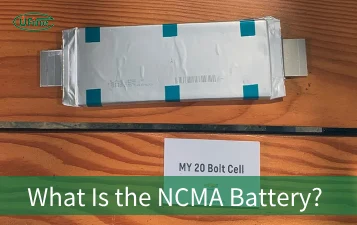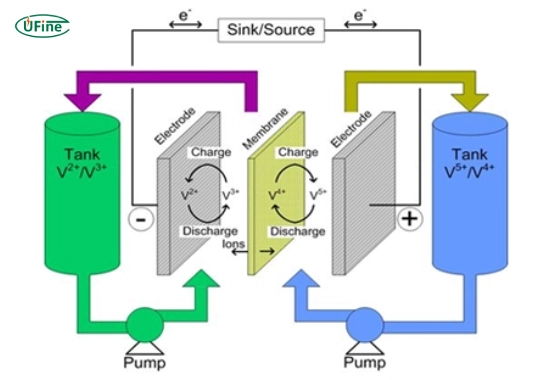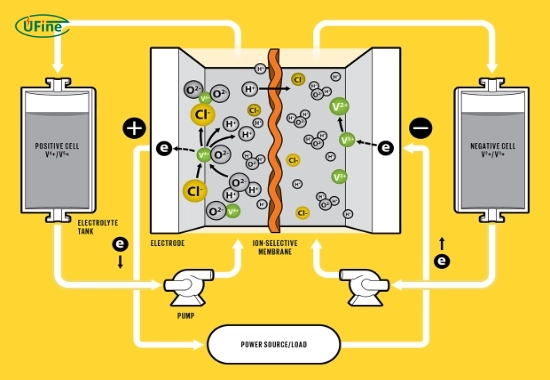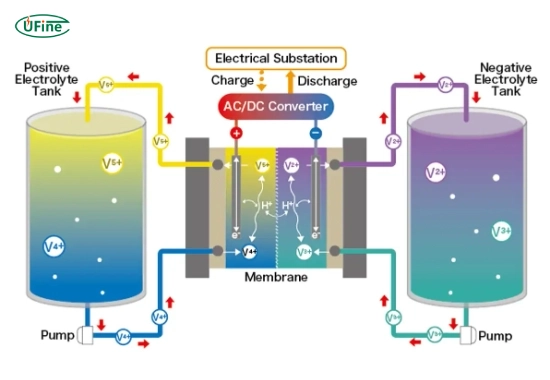
- Part 1. What is a vanadium redox flow battery?
- Part 2. Why is maintenance essential for vanadium redox flow batteries?
- Part 3. How can you maintain a vanadium redox flow battery?
- Part 4. What factors affect the lifespan of a vanadium redox flow battery?
- Part 5. How can you extend the life of your vanadium redox flow battery?
- Part 6. What are the common problems with vanadium redox flow batteries?
- Part 7. FAQs
Vanadium redox flow batteries (VRFBs) have gained significant attention recently for their durability, scalability, and effectiveness in renewable energy storage. However, like any energy storage system, proper maintenance is essential to ensure optimal performance and extend the lifespan of your VRFB. Whether using it for industrial purposes or renewable energy storage, understanding how to care for your battery will help you maximize its efficiency and save costs in the long run.
In this in-depth guide, we’ll explore key maintenance practices, provide tips to extend the life of your VRFB, and answer frequently asked questions about these cutting-edge batteries.
Part 1. What is a vanadium redox flow battery?
A vanadium redox flow battery (VRFB) is a rechargeable battery that utilizes vanadium ions in different oxidation states to store and release energy. Unlike conventional batteries, VRFBs use liquid electrolytes stored in external tanks, which flow through a central cell stack during operation. This unique design allows them to scale quickly, making them ideal for large-scale energy storage applications like renewable energy systems or grid support.
Key benefits of VRFBs include:
- High durability: VRFBs have a long operational lifespan, often exceeding 20 years.
- Scalability: The energy capacity can be increased by simply adding more electrolyte tanks.
- Deep discharge capability: They can discharge up to 100% without damaging the system.
- Sustainability: Vanadium can be recycled, making it an environmentally friendly choice.
Part 2. Why is maintenance essential for vanadium redox flow batteries?
While VRFBs are known for their durability, regular maintenance is crucial to ensure peak performance and extend lifespan. Proper maintenance prevents issues such as electrolyte degradation, electrode fouling, and imbalance between the positive and negative electrolyte tanks.
Neglecting maintenance can lead to:
- Reduced storage capacity.
- Inefficient energy conversion.
- Shortened battery life.
- Higher operational costs due to system failure or repairs.
Part 3. How can you maintain a vanadium redox flow battery?
Maintaining a VRFB involves systematically monitoring, cleaning, and balancing the system. Below are the most critical steps:
1. Monitor electrolyte levels regularly
The electrolyte is the lifeblood of a VRFB. Over time, the electrolyte solution can evaporate or leak, reducing the battery’s capacity. Make sure to:
- Check electrolyte levels periodically.
- Replenish the solution as needed to maintain optimal performance.
2. Balance the electrolyte state of charge (SoC)
Over time, the state of charge (SoC) in the positive and negative tanks can become unbalanced, which reduces efficiency. Use the system’s control software to monitor and rebalance the SoC regularly.
3. Inspect and clean the cell stack
The cell stack is where the energy conversion takes place. Deposits or contaminants can build up on the electrodes, reducing efficiency. To maintain performance:
- Inspect the cell stack periodically for signs of fouling or wear.
- Clean the electrodes as per the manufacturer’s guidelines.
4. Monitor system temperature
VRFBs operate best within a specific temperature range, typically between 10°C and 40°C. Extreme temperatures can degrade the electrolyte or damage components. Use temperature control systems to ensure the battery stays within this range.
5. Perform regular system diagnostics
Most VRFBs come with built-in diagnostic tools. Run these diagnostics to identify potential issues early. Look for performance metrics like:
- Voltage efficiency.
- Pump flow rates.
- Electrolyte conductivity.
Part 4. What factors affect the lifespan of a vanadium redox flow battery?
Several factors can influence the life of your VRFB. Understanding these factors can help you implement strategies to extend its life.
1. Quality of the electrolyte
The electrolyte solution plays a pivotal role in the performance of a VRFB. Using high-purity vanadium and maintaining the correct chemical composition will prevent degradation and extend the battery’s life.
2. Frequency of charge and discharge cycles
While VRFBs are designed for frequent cycling, overloading the system with excessive charge/discharge cycles can cause wear. Stick to the manufacturer’s recommended cycle limits.
3. Maintenance schedule adherence
Skipping routine checks or delaying repairs can lead to cumulative damage, shortening the battery’s lifespan.
4. Operating environment
Dust, humidity, and extreme temperatures can adversely affect the battery. Ensure that you house the system in a clean, climate-controlled environment.
Part 5. How can you extend the life of your vanadium redox flow battery?
To get the most out of your VRFB, follow these best practices:
1. Use high-quality components
Invest in high-quality pumps, membranes, and other components to ensure the system operates efficiently and lasts longer.
2. Prevent overcharging and over-discharging
Although VRFBs are resilient, consistent overcharging or over-discharging can degrade the electrolyte and damage the system. Use automated controls to prevent these issues.
3. Recycle and replenish electrolytes
Over time, the vanadium electrolyte may degrade. Recycle and replenish it as needed to maintain its chemical integrity.
4. Maintain a stable operating environment
As mentioned earlier, temperature and cleanliness are critical. Keep the system in a stable environment to minimize wear and tear.
5. Schedule professional inspections
Your team can perform routine maintenance in-house, but it’s a good idea to have professionals inspect the system annually to address any underlying issues.
Part 6. What are the common problems with vanadium redox flow batteries?
Even with proper maintenance, you may encounter common issues with VRFBs. Here’s how to troubleshoot them:
1. Electrolyte imbalance
If one tank’s SoC is significantly higher than the other, the battery’s performance will drop. Rebalance the electrolyte using the system’s controls.
2. Reduced efficiency
This can result from fouled electrodes or degraded membranes. Cleaning or replacing these components will restore efficiency.
3. Pump failure
Pumps circulate the electrolyte through the system. A failed pump can halt operation entirely. To avoid breakdowns, regularly check and service the pumps.
4. Leaks
Leaks in the electrolyte tanks or pipes can reduce the system’s capacity. Inspect for leaks regularly and repair them promptly.
Part 7. FAQs
-
How long does a vanadium redox flow battery last?
An adequately maintained VRFB can last over 20 years, and the electrolyte can last indefinitely with proper recycling and replenishment. -
Can vanadium redox flow batteries be recycled?
Yes, vanadium can be fully recycled, making VRFBs an environmentally friendly energy storage option. -
How often should I perform maintenance on my VRFB?
Essential maintenance, such as checking electrolyte levels, should be done monthly, and you should schedule professional inspections annually. -
What happens if the electrolyte becomes unbalanced?
An unbalanced electrolyte can reduce the battery’s efficiency and capacity. Use the system’s controls to rebalance the state of charge. -
Are vanadium redox flow batteries safe?
Yes, VRFBs are considered very safe due to their non-flammable electrolyte and low risk of thermal runaway.
Related Tags:
More Articles

What is the NCMA battery? What is the difference between it and the NMC battery? Which one is better? This article will answer your questions.
What Is the Lithium Battery Short Circuit?
What is the lithium battery short circuit? To understand a lithium battery short circuit, we first need to understand how the battery works.
How to Distinguish Battery Cells, Battery Modules, And Battery Packs?
Discover how battery cells, modules, and packs work, their engineering roles, and practical guidance for safe and efficient design.
What is the Difference Between Silver Zinc Battery vs. Lithium-ion Rechargeable?
Compare silver zinc and lithium-ion rechargeable batteries: energy density, cycle life, safety, cost, and uses in drones, medical devices, EVs, and electronics.
What are Watts and Watt Hours in Battery?
Understand watt vs watt-hour in batteries: key differences, how to calculate capacity, and why they matter. Includes free comparison table.





